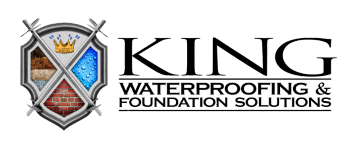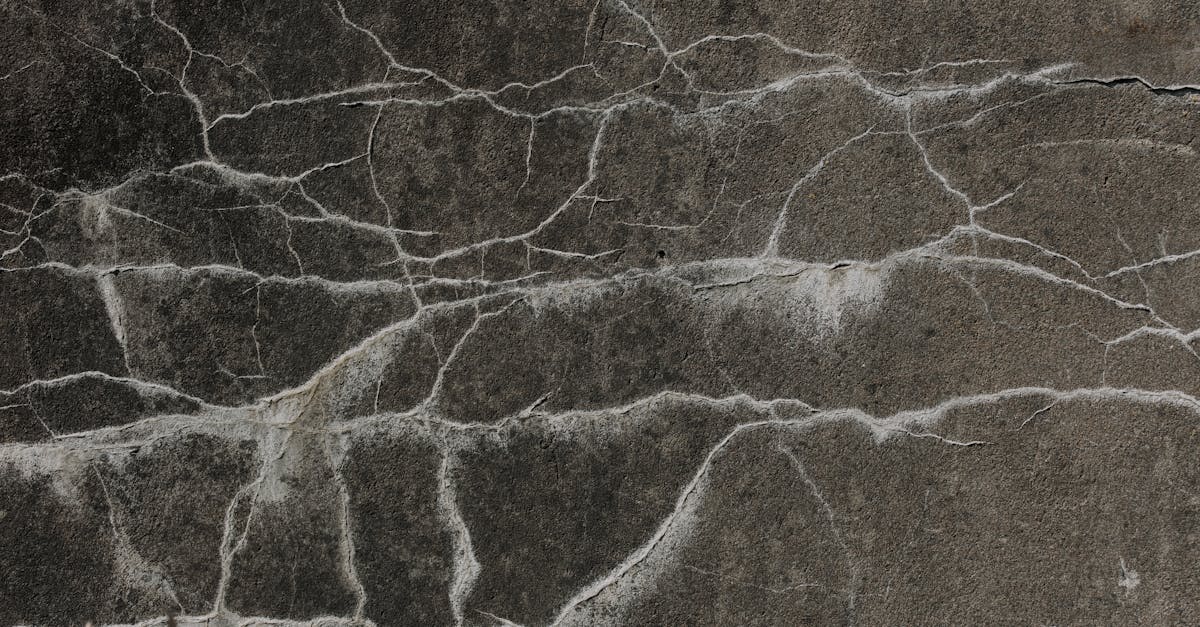A stable foundation is the cornerstone of any building, ensuring safety and longevity. When cracks and shifts appear, it’s crucial to address these issues promptly to avoid costly repairs and potential hazards. Foundation stabilization involves various techniques to reinforce and secure the structure, providing peace of mind for homeowners and building managers alike.
King Waterproofing & Foundation Solutions stands out as a trusted provider in this field, offering expert services to tackle foundation problems head-on. Their experienced team uses state-of-the-art methods to diagnose and repair foundation issues, ensuring buildings remain safe and sound for years to come. Whether dealing with minor cracks or significant structural concerns, their solutions are designed to restore stability and prevent future damage.
Understanding Foundation Stabilization
Foundation stabilization involves methods designed to reinforce a building’s foundation, ensuring its long-term integrity. Foundation issues often root in soil movement, moisture variations, or construction flaws, leading to structural instabilities. By employing precise techniques, homeowners can mitigate these problems.
Causes of Foundation Issues
- Soil Movement: Expansive soils with high clay content can swell with moisture, causing the foundation to shift.
- Moisture Variation: Changes in moisture levels, due to poor drainage or plumbing leaks, can lead to soil contraction or expansion.
- Construction Errors: Inadequate foundation design or poor construction practices can weaken structural integrity.
Common Stabilization Techniques
- Underpinning: Reinforces foundations by extending their depth using steel piers or concrete piles. This method transfers the building load to stable soil layers.
- Helical Piers: These are steel shafts with helical plates. When driven into the ground, they provide support to settle or lifting foundations.
- Slab Jacking: Involves lifting sunken concrete slabs by injecting a grout mixture below them. It’s often used for smaller fixes in residential settings.
- Increased Property Value: Homes with stabilized foundations have higher market values.
- Enhanced Safety: Structural integrity reduces the risk of collapses or significant damages.
- Long-term Savings: Prevents expensive repairs by addressing issues early.
Stabilizing a foundation is critical for ensuring the longevity and safety of structures. By recognizing the causes and employing the correct techniques, homeowners can effectively safeguard their investments.
Common Foundation Problems
Buildings often suffer from foundation issues that can jeopardize their structural integrity, leading to costly repairs and safety hazards. Understanding the common problems can help address them more effectively.
Signs of Foundation Issues
Homeowners may observe multiple signs indicating foundation issues. Cracks in walls or floors, sticking doors or windows, and uneven floors are common examples. Water pooling near the foundation or visible gaps around exterior doors may also point to underlying problems. Monitoring these signs helps identify foundation problems early.
Causes of Foundation Damage
Several factors contribute to foundation damage. Soil movement due to changes in moisture levels often causes foundations to shift. Inadequate drainage or plumbing leaks can exacerbate this problem by introducing excess water. Additionally, poor construction practices or the use of substandard materials result in weak foundations. Understanding these causes aids in implementing effective stabilization methods.
Methods to Stabilize Foundation
Several methods exist to stabilize a foundation, each addressing specific issues and leveraging different technologies.
Traditional Methods
Traditional methods have been used for decades to stabilize foundations.
- Underpinning: Underpinning involves extending the foundation to deeper, more stable soil layers to provide extra support. This method is effective when the existing foundation is too shallow or has weakened over time.
- Concrete Piers: Concrete piers utilize poured concrete columns to transfer the building load to more reliable soil strata. This method is often employed in residential buildings with significant foundation movement.
- Mudjacking: Also known as slab jacking, mudjacking injects a slurry mixture under a sunken concrete slab to lift and level it. It’s a cost-effective solution for minor leveling issues and settling problems.
Modern Techniques
Modern techniques incorporate advanced technologies for better efficiency and long-term results.
- Helical Piers: Helical piers are steel shafts with helical plates, screwed into the ground to transfer the load to stable soil layers. They offer quick installation and minimal disturbance to the surrounding area. Useful in various soil conditions, they are ideal for new constructions and existing structures.
- Polyurethane Foam Injection: This method involves injecting high-density polyurethane foam into the soil under the foundation. The foam expands, compacting the soil and raising the foundation back to its original level. Commonly used for repairing settled slabs, this technique provides a fast and non-invasive solution.
- Micropiles: Micropiles are small-diameter, high-strength steel rods drilled deep into the ground to support heavy loads. They can be installed in areas with restricted access and through various soil types, making them versatile for different foundation stabilization scenarios.
Choosing the Right Stabilization Method
Selecting the appropriate stabilization technique is critical for ensuring the long-term integrity of a building’s foundation. Different methods suit different conditions and issues, so an accurate assessment should guide the choice.
Assessing the Damage
A thorough damage assessment determines the suitable stabilization method. Inspect the foundation for signs like cracks in walls, floors, and ceilings, sticking doors or windows, or uneven floors. Soil composition around the property should also be examined, as clay-rich soils tend to expand and contract with moisture changes. Moisture levels and drainage patterns provide insight into potential water-related issues.
Consulting with Experts
Engaging experienced foundation specialists ensures that the right stabilization method is chosen. Experts from firms like King Waterproofing & Foundation Solutions diagnose the root causes of foundation problems and recommend appropriate solutions. They employ advanced technologies for precise evaluations and leverage extensive knowledge to identify the most effective stabilization techniques, whether it’s underpinning, helical piers, or other advanced methods.
Cost Considerations
Foundation stabilization involves various costs influenced by multiple factors. Property owners must understand these elements to budget effectively for necessary repairs.
Factors Affecting Costs
Several factors impact the cost of stabilizing a foundation:
- Extent of Damage: Significant damage (e.g., large cracks, severe shifting) may require comprehensive solutions, raising costs.
- Type of Foundation: Different foundations, such as slab, crawl space, or basement, necessitate distinct stabilization methods, affecting costs.
- Soil Conditions: Poor soil conditions (e.g., expansive clay, loose fill) may complicate repairs, increasing labor and material expenses.
- Chosen Stabilization Method: Traditional methods like underpinning might cost less than advanced techniques like helical piers or polyurethane foam injection.
- Accessibility: Limited access to the repair site can increase labor costs as more resources and time may be needed.
Budget-Friendly Solutions
Homeowners seeking cost-effective options can explore several budget-friendly foundation stabilization methods:
- Concrete Piers: Suitable for minor to moderate foundation issues, concrete piers offer stability at a lower cost compared to other methods.
- Slab Jacking: An effective technique for lifting sunken concrete slabs, slab jacking is less expensive and less invasive.
- Steel Push Piers: Providing a reliable solution for deep foundations, steel push piers can be a cost-effective choice for stabilizing structures suffering from significant settlement.
- Polyurethane Foam Injection: This modern, minimally-invasive method is comparatively affordable and suitable for lifting settled concrete.
By evaluating the above factors and methods, property owners can make informed decisions to stabilize their foundation within budget.
Preventative Measures
Preventative measures play a critical role in maintaining a stable foundation. Implementing regular maintenance and smart landscaping practices can prevent the onset of serious foundation problems.
Regular Maintenance
Regular maintenance helps identify potential foundation issues before they escalate. Homeowners should:
- Inspect for Cracks: Check walls, floors, and ceilings for any new or expanding cracks.
- Monitor Doors and Windows: Ensure doors and windows open and close smoothly, as sticking can indicate foundation movement.
- Check Basement: Inspect the basement for moisture or water seepage, which can signal inadequate drainage or plumbing leaks.
- Test Slope: Verify that the ground around the foundation slopes away from the structure to prevent water pooling.
- Examine Gutters and Downspouts: Ensure gutters and downspouts direct water away from the foundation.
Landscaping Tips
Proper landscaping can prevent water from undermining the foundation. Some key tips include:
- Strategic Planting: Plant trees and large shrubs away from the foundation to avoid root interference.
- Mulching: Apply mulch around plants to retain moisture and reduce soil erosion.
- Proper Grading: Maintain a grade that slopes away from the foundation to facilitate drainage.
- Control Irrigation: Avoid over-watering and ensure irrigation systems do not direct water towards the foundation.
- Install French Drains: Utilize French drains to redirect water away from the foundation, reducing hydrostatic pressure.
Maintaining a stable foundation involves a combination of ongoing maintenance and strategic landscaping. These preventative measures can help avoid significant foundation issues and costly repairs.
Conclusion
Stabilizing a foundation is essential for the safety and longevity of any structure. Addressing foundation issues promptly can prevent costly repairs and hazards. King Waterproofing & Foundation Solutions offers expert services to diagnose and repair foundation problems, ensuring stability and peace of mind.
Choosing the right stabilization method is crucial, and it’s best done with the guidance of experienced professionals. Regular maintenance and preventative measures can help maintain a stable foundation and protect homeowners’ investments.
By understanding the causes and solutions for foundation issues, property owners can make informed decisions to safeguard their homes. Investing in foundation stabilization not only enhances safety but also increases property value and long-term savings.


